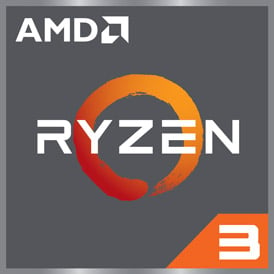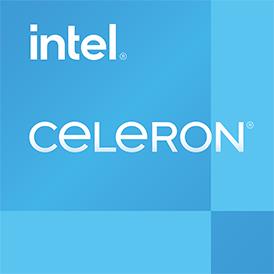 Geekbench 3, 64bit (Multi-Core)
Geekbench 3, 64bit (Multi-Core)
|
|
AMD Ryzen 3 3300U
4C 4T @ 2.1 GHz
|
12125
|
|
|
Intel Celeron G4900T
2C 2T @ 2.8 GHz
|
4875
|
 Estimated results for PassMark CPU Mark
Estimated results for PassMark CPU Mark
|
|
AMD Ryzen 3 3300U
4C 4T @ 2.1 GHz
|
5684
|
|
|
Intel Celeron G4900T
2C 2T @ 2.8 GHz
|
2290
|
 Geekbench 3, 64bit (Single-Core)
Geekbench 3, 64bit (Single-Core)
|
|
AMD Ryzen 3 3300U
4C 4T @ 2.1 GHz
|
4012
|
|
|
Intel Celeron G4900T
2C 2T @ 2.8 GHz
|
2758
|
 Geekbench 6 (Multi-Core)
Geekbench 6 (Multi-Core)
|
|
AMD Ryzen 3 3300U
4C 4T @ 2.1 GHz
|
2567
|
|
|
Intel Celeron G4900T
2C 2T @ 2.8 GHz
|
982
|
 Geekbench 5, 64bit (Multi-Core)
Geekbench 5, 64bit (Multi-Core)
|
|
AMD Ryzen 3 3300U
4C 4T @ 2.1 GHz
|
2472
|
|
|
Intel Celeron G4900T
2C 2T @ 2.8 GHz
|
1386
|
 Geekbench 6 (Single-Core)
Geekbench 6 (Single-Core)
|
|
AMD Ryzen 3 3300U
4C 4T @ 2.1 GHz
|
967
|
|
|
Intel Celeron G4900T
2C 2T @ 2.8 GHz
|
594
|
 Geekbench 5, 64bit (Single-Core)
Geekbench 5, 64bit (Single-Core)
|
|
AMD Ryzen 3 3300U
4C 4T @ 2.1 GHz
|
760
|
|
|
Intel Celeron G4900T
2C 2T @ 2.8 GHz
|
735
|
 Cinebench R15 (Multi-Core)
Cinebench R15 (Multi-Core)
|
|
AMD Ryzen 3 3300U
4C 4T @ 2.1 GHz
|
510
|
|
|
Intel Celeron G4900T
2C 2T @ 2.8 GHz
|
213
|
 Cinebench R11.5, 64bit (Multi-Core)
Cinebench R11.5, 64bit (Multi-Core)
|
|
AMD Ryzen 3 3300U
4C 4T @ 2.1 GHz
|
5.9
|
|
|
Intel Celeron G4900T
2C 2T @ 2.8 GHz
|
2.6
|
 Cinebench R11.5, 64bit (Single-Core)
Cinebench R11.5, 64bit (Single-Core)
|
|
AMD Ryzen 3 3300U
4C 4T @ 2.1 GHz
|
1.6
|
|
|
Intel Celeron G4900T
2C 2T @ 2.8 GHz
|
1.4
|

